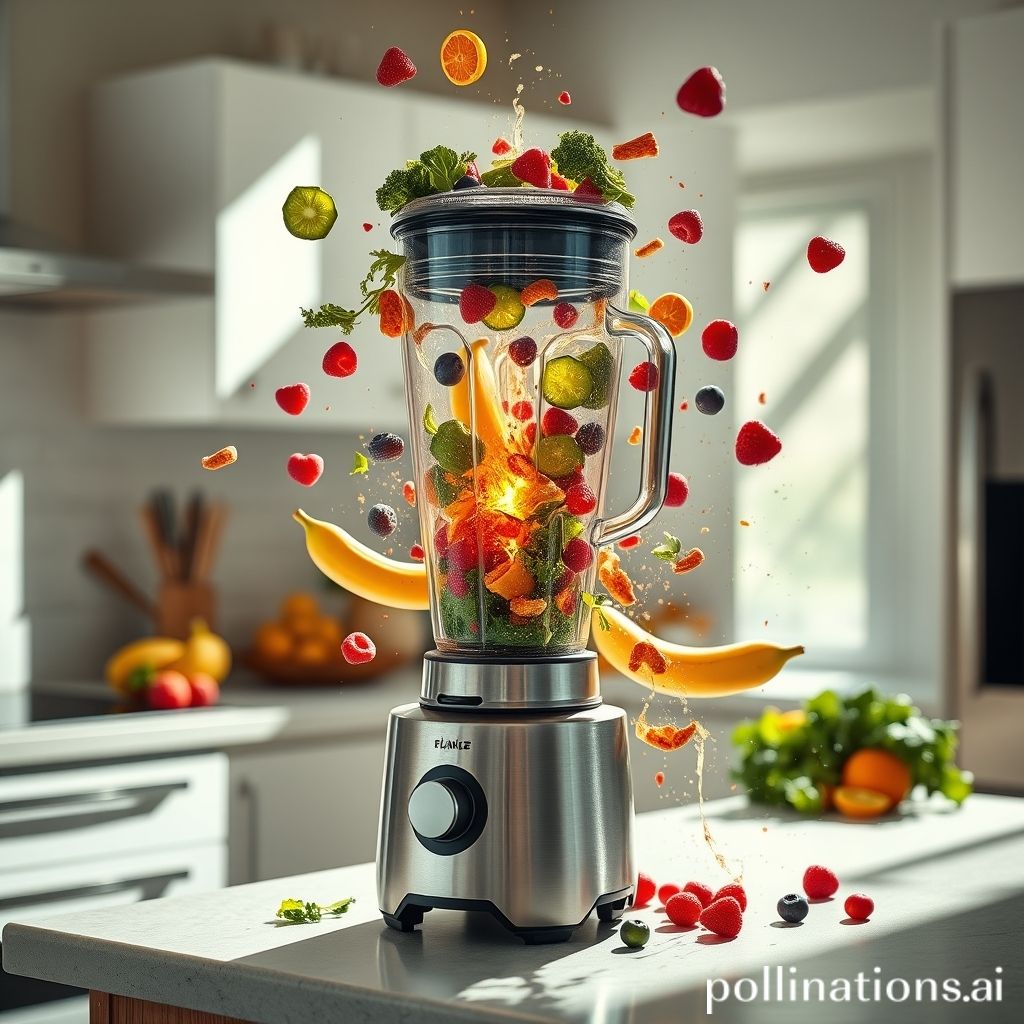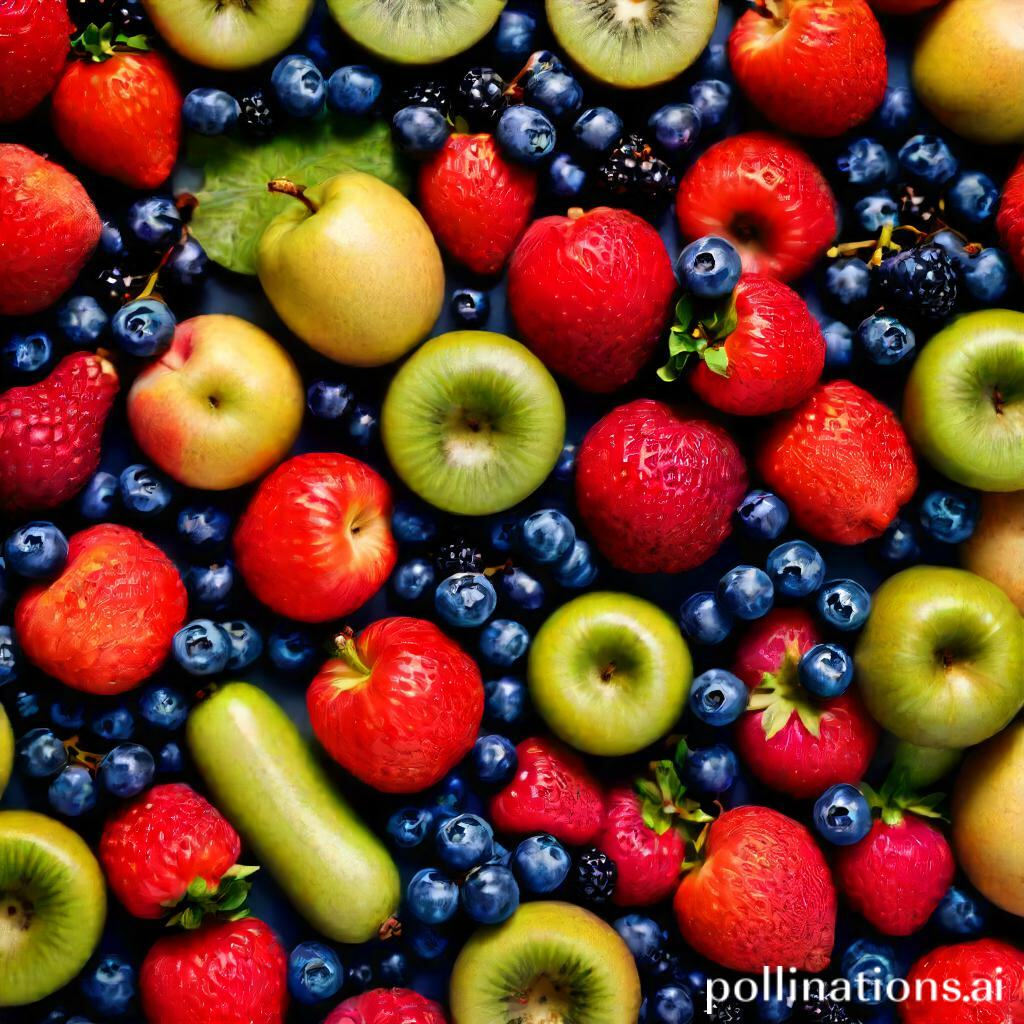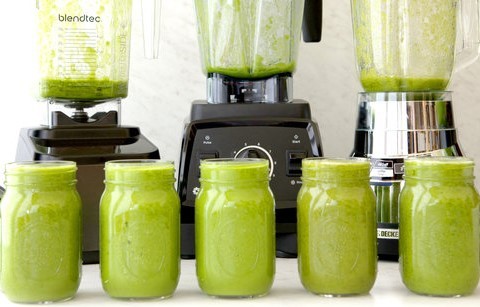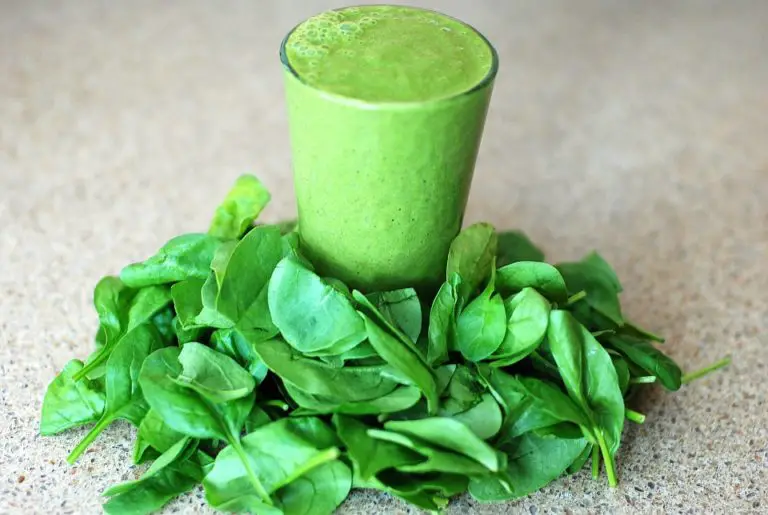Do Blenders Destroy Nutrients?
Pertaining to smoothies, it’s not just about the refreshment it offers, but also the satisfaction of enjoying it. Similar to a delightful melody, smoothies can be a symphony of flavors that excite your taste buds.
In this article, we will delve into the question: Do blenders destroy nutrients? Many individuals are curious to know if blending fruits and vegetables in a blender affects the nutritional value of their food. We will uncover the truth behind whether blenders cause nutrient loss and whether this is a concern that should be taken seriously. So, let’s get started and find out the answer to this pressing question.

Table of Contents
How Blenders Work: Grasping the Blending Process
1. Breaking down fruits and vegetables: The role of blenders in creating smooth textures
Blenders are essential for breaking down fruits and vegetables into a smooth and consistent texture. The powerful blades of a blender spin at high speeds, cutting through the fibers and cell walls of the ingredients. This process releases the juices, pulp, and nutrients, resulting in a homogeneous mixture.
By breaking down the cell walls, blenders make it easier for our bodies to absorb the nutrients present in fruits and vegetables. The finely blended texture also enhances the taste, making it more enjoyable to consume.
2. The impact of high-speed blending: Does it lead to nutrient degradation?
A concern with using blenders is whether the high-speed blending process leads to nutrient degradation. Whilst some nutrients can be sensitive to heat and oxygen exposure, the impact of blending on nutrient loss is generally minimal.
Research suggests that the mechanical action of blending, even at high speeds, does not significantly affect the nutrient content of fruits and vegetables. In fact, blending can help release more nutrients and antioxidants by breaking down the cell walls.
Notwithstanding, it is important to note that prolonged blending or excessive heat generated during blending can cause some heat-sensitive nutrients, such as vitamin C and folate, to degrade. To minimize nutrient loss, it is recommended to blend for shorter durations and avoid excessive heat generated by the blender.
Expert Tips: Blending fruits and veggies in a high-speed blender breaks down cell walls, releasing more nutrients. Blend for shorter durations to minimize nutrient loss.Nutrient Loss: What Science Tells Us
1. The Effect of Heat and Oxygen
Blending involves using high-speed blades, which can generate heat. Although, the heat produced by blenders is generally not enough to destroy nutrients. Studies have shown that nutrient loss due to heat is minimal because blenders operate for a short duration.
Blending introduces some air into the mixture, which can contribute to nutrient degradation, especially in sensitive compounds like vitamins. Although, modern blenders are designed to minimize air incorporation, reducing potential nutrient loss caused by oxygen exposure.
2. Examining Vitamin C and Other Sensitive Nutrients
Vitamin C is one of the most vulnerable nutrients to degradation from heat and oxygen exposure. Although, studies have shown that blenders do not significantly affect the vitamin C content in fruits and vegetables. The short blending time and limited heat generation help retain vitamin C to a great extent.
Other sensitive nutrients like folate and vitamin B6 may also be affected by blending, but the impact on these nutrients is minimal, and the overall nutritional value of blended foods remains high.
To provide a comprehensive overview, the table below summarizes the findings regarding nutrient loss during blending:
| Nutrient | Effect of Blending |
|---|---|
| Vitamin C | No significant loss |
| Folate | Minimal loss |
| Vitamin B6 | Minimal loss |
| Other nutrients | Negligible loss |
Retention of Fiber and Antioxidants
1. Maintaining fiber content
When fruits and vegetables are blended, it can affect the fiber content in them. Albeit, the extent of this impact depends on various factors.
- Blending process: The process of blending breaks down the cell walls of fruits and vegetables, making the fiber more accessible to our bodies.
- Fiber type: Soluble and insoluble fibers may be affected differently by blending. Soluble fibers tend to retain their benefits even after blending, Meanwhile some insoluble fibers may be broken down.
- Blending duration: The longer the blending duration, the more the fiber may be broken down.
2. Preserving antioxidants
Blenders can help retain the beneficial antioxidants found in fruits and vegetables, but certain considerations should be kept in mind.
- Oxidative damage: The blending process can lead to some oxidative damage and loss of antioxidants due to exposure to air and heat. Albeit, the overall impact on antioxidant retention is minimal.
- Blending speed: High-speed blending for extended periods may generate more heat and result in a higher loss of antioxidants. It is advisable to blend at lower speeds to minimize this effect.
- Storage: The way the blended mixture is stored can also affect antioxidant retention. Storing it in airtight containers and consuming it soon after preparation can help preserve antioxidants.

Maximizing Nutrient Retention: Tips for Blending
1. Blending Techniques for Nutrient Preservation
Relating to preserving the maximum amount of nutrients in your blended fruits and vegetables, it is important to pay attention to your blending techniques. Here are some tips:
- Use low-speed settings: Blending at high speeds for a long time can generate heat, which may lead to nutrient loss. Opt for low-speed settings to minimize heat production and preserve more nutrients.
- Avoid over-blending: Meanwhile it is important to achieve a smooth consistency, over-blending can cause excessive oxidation and nutrient degradation. Blend until you reach your desired texture, but avoid blending for too long.
- Use pulse mode: Some blenders have a pulse mode option, which allows you to blend in short bursts. Using pulse mode can help prevent excessive heat buildup and nutrient loss.
2. The Impact of Blending Duration
The duration of blending can also affect nutrient retention. Here are some guidelines to consider:
- Blend briefly: Aim to blend for a shorter duration to minimize nutrient loss. Start with shorter blending intervals and gradually increase if needed.
- Monitor texture: Pay attention to the texture of your blend. Once you achieve a smooth consistency, you can stop blending to prevent further nutrient degradation.
- Experiment with different ingredients: Different fruits and vegetables may require different blending durations to achieve optimal results. Experiment with different ingredients to find the right balance.
| Information |
|---|
| Blending techniques |
| Low-speed settings |
| Pulse mode |
| Blending duration |
| Texture monitoring |
| Experimentation with ingredients |
Nutritional Benefits of Blending
1. Enhanced Nutrient Absorption
Blending fruits and vegetables increases the bioavailability of nutrients, making them easier for our bodies to absorb. When we blend, the cell walls of the produce are broken down, allowing our digestive system to access and extract the maximum amount of nutrients. This is especially beneficial for nutrients trapped within the cell walls, like antioxidants and vitamins. Blending unlocks these valuable nutrients, making them readily available for our bodies to use.
For example, blending leafy greens like spinach or kale enhances the absorption of essential vitamins such as vitamin C and vitamin K. Blending fruits like berries releases more antioxidants into the mix, providing a powerful boost to our immune system. So, if you want to maximize the nutritional benefits of your fruits and vegetables, using a blender is a great option.
2. Promoting a Balanced Diet
Incorporating a variety of fruits and vegetables into your blends promotes a balanced diet. By blending different types of produce, you can easily consume a wide range of essential nutrients in one convenient drink. This is especially helpful for individuals who struggle to meet their daily recommended intake of fruits and vegetables.
For instance, you can create a delicious green smoothie by blending spinach, banana, and almond milk. This simple blend provides you with a good amount of fiber, vitamins, and minerals, all in one glass. By experimenting with different fruits and vegetables in your blends, you can ensure that you’re getting a diverse array of nutrients essential for maintaining overall health and well-being.
Conclusion
using a blender to blend fruits and vegetables does not significantly destroy nutrients. At that juncture may be a slight loss of nutrients due to oxidation and heat generated during blending, the impact is minimal.
It is important to note that the overall nutritional value of fruits and vegetables remains largely intact even after blending. So, there is no need to be overly concerned about nutrient loss when using a blender. Enjoy the convenience and health benefits of blending without worrying about compromising the nutritional value of your food.
FAQ: Frequently Asked Questions
FAQ 1: Does blending destroy all the nutrients in fruits and vegetables?
Blending does not destroy all the nutrients in fruits and vegetables. During it can break down some nutrients due to the mechanical action of blending, it also helps in making these nutrients more accessible to the body.
FAQ 2: Can blending negatively impact the nutritional value of green smoothies?
Blending green smoothies does not negatively impact their nutritional value. In fact, blending helps to retain the fiber, vitamins, and minerals present in the ingredients, making it easier for the body to absorb and utilize them.
FAQ 3: Is it better to eat whole fruits and vegetables instead of blending them?
Both eating whole fruits and vegetables and blending them have their advantages. Eating whole fruits and vegetables provides the benefits of chewing and slower digestion, During blending allows for quicker nutrient absorption. It ultimately depends on personal preference and dietary needs.
FAQ 4: Can blending affect the nutrient content of homemade soups and sauces?
Blending homemade soups and sauces can affect the nutrient content to some extent. Although, the impact is minimal, and most of the nutrients remain intact. Blending helps to create a smooth texture and enhances the flavors.
FAQ 5: Are there any specific blenders or blending techniques that help retain nutrients better?
Certain blenders, such as high-speed blenders and vacuum blenders, are designed to retain more nutrients during the blending process. These blenders minimize oxidation and heat buildup, which can degrade the nutritional value. Additionally, blending for shorter durations and consuming the blended mixture immediately can help retain nutrients better.
Read Similar Post:
1. The Ultimate Guide to Choosing the Ideal Smoothie Bottle
2. Refreshing Mango Smoothie Recipe: A Step-by-Step Guide





